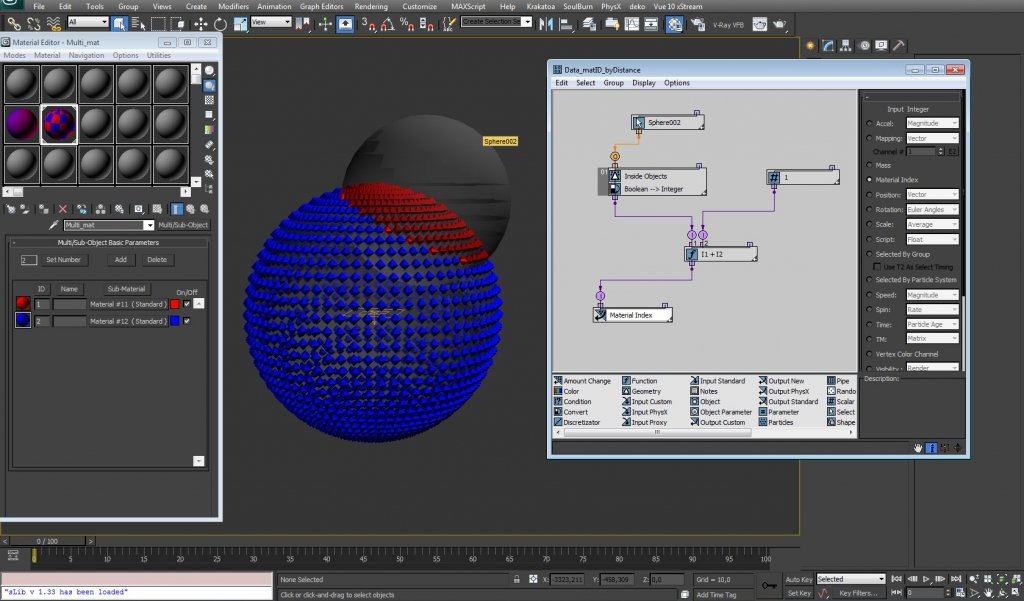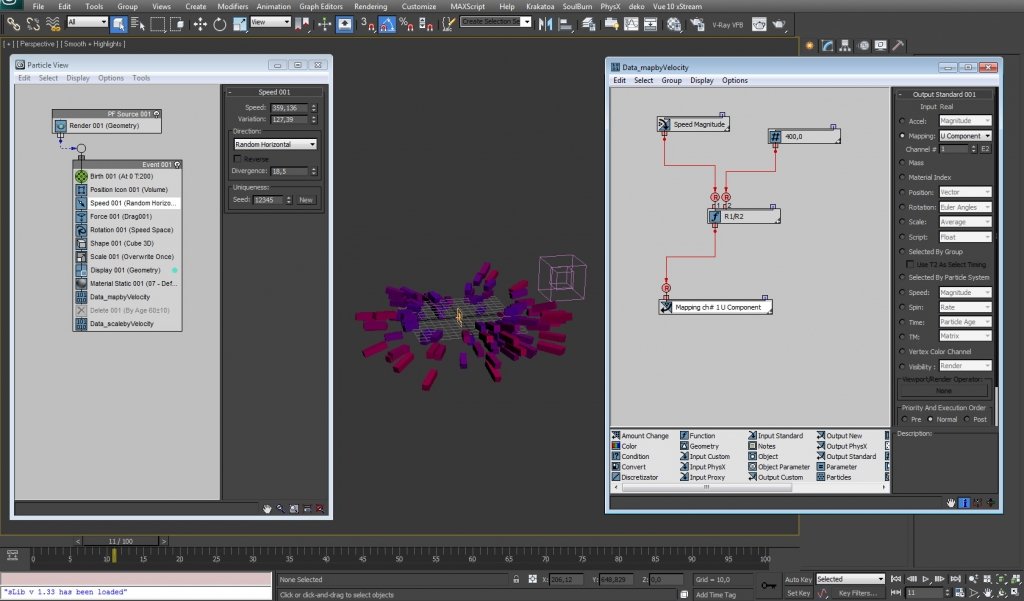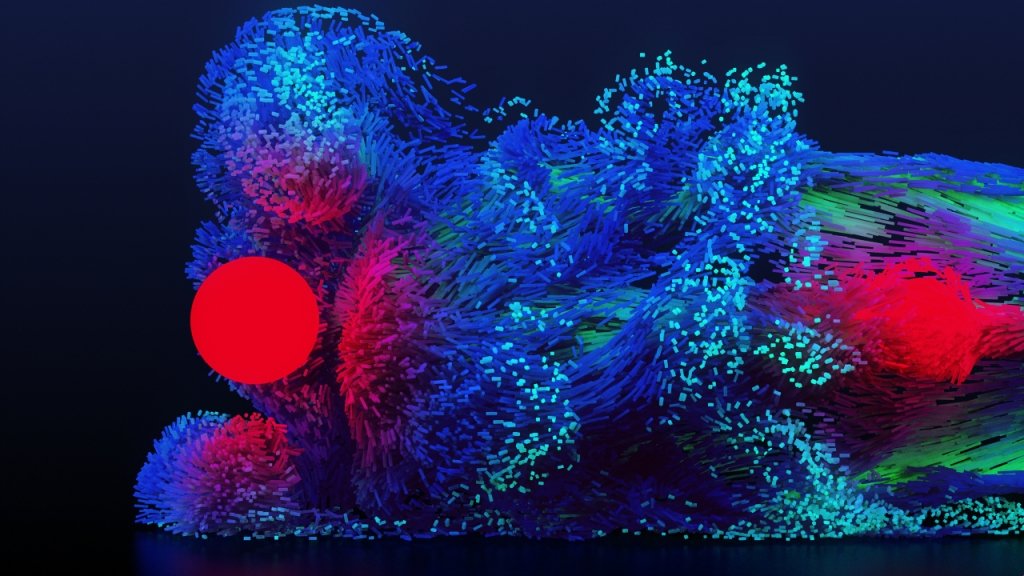In the first Particle coloring part, we looked through the simplest coloring methods. This time let’s try something more advanced.

SIMPLE MAPPING BY OBJECT
As particles move, mapping coordinations get completely lost. So the best way is to lock them or inherit from right object. This can be done with Mapping Object operator:

ADVANCED DATA MANIPULATION | #BOX3
Blending two predefined colors by checking if particles are inside proxy object (Sphere002). If the condition is positive, then that particle get one color value to the vertex color channel. If not, another color input value goes through the flow without any interpolation.
Also, keep in mind that suboperator New In Event is designed to take the initial value on the event entry only. It should be connected with flow output or proxy geometry input.

Above method isn’t recommended while colors are generated inside the flow. It’s always better to have colors in a map and in particles to set required mapping:

Same can be done with particles from another system:

Also, we can blend colors by taking material ID from multisub material:

MAPPING BY AGE
Here is an example of how to set mapping by Particle Age. Just Divide Particle Age with a Lifespan, but don’t forget that Lifespan channel requires data particles dying time, so Delete operator should be added to the particle flow. Alternatively, Lifespan value can be set in a data flow.

MAPPING BY VELOCITY
Example of how to use particle speed in a data flow. In the second operator also particle scale is changed according to the velocity.

Here is a more advanced 3dsmax scene where particles are colored by their speed and distance to the red spheres.
The scene is simple enough: particles are driven by FumeFX fluids. Then mapping by velocity is mixed with mapping by the distance to red spheres. Also, a scale is changed by particles Velocity.

Bonus
Particles mapping&coloring also can be done with Krakatoa and Frost plugins. Saved particles as PRT, can be modified through magma flow with geometries added in Frosts Custom Geometry mode. Frost by default inherits input particles mapping info as vertex color.








